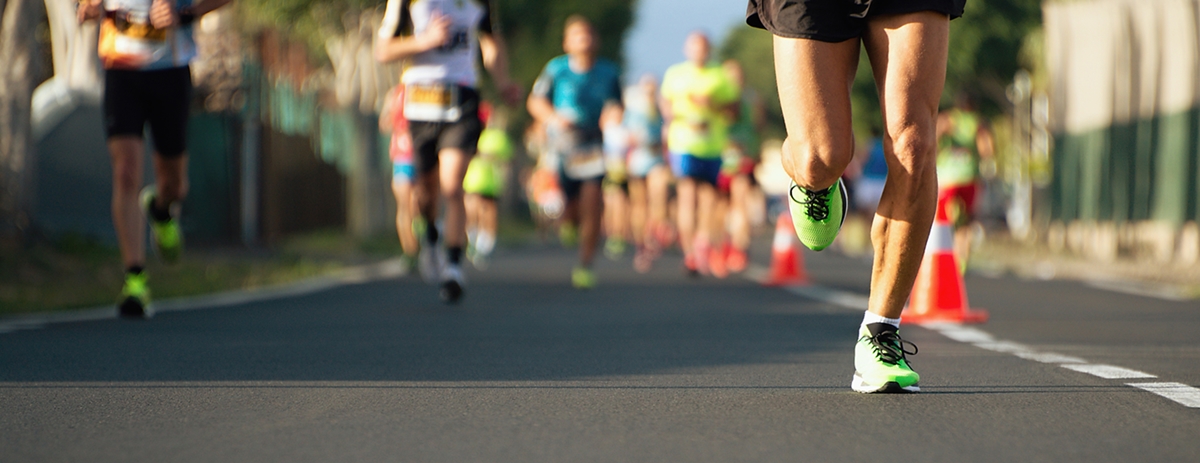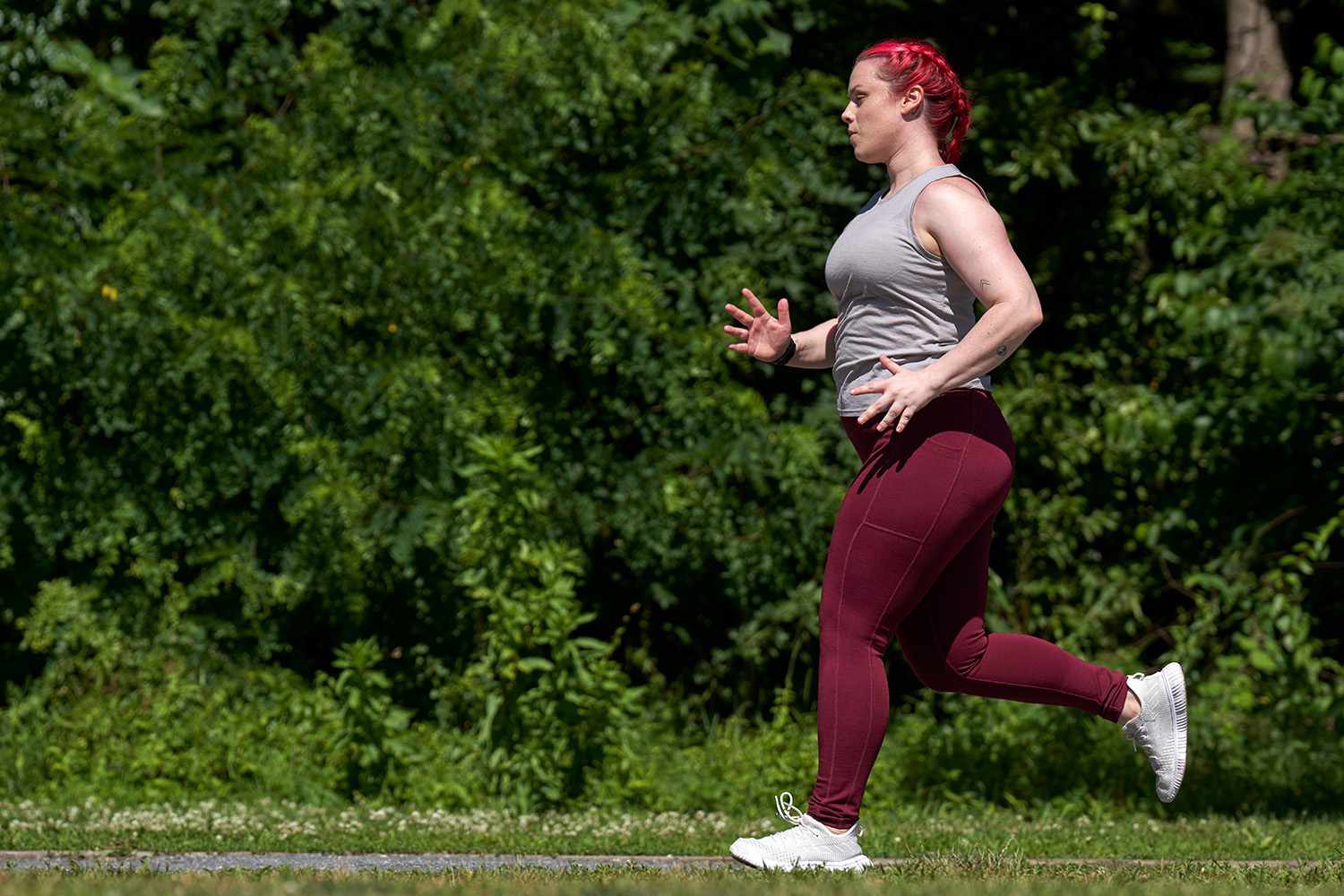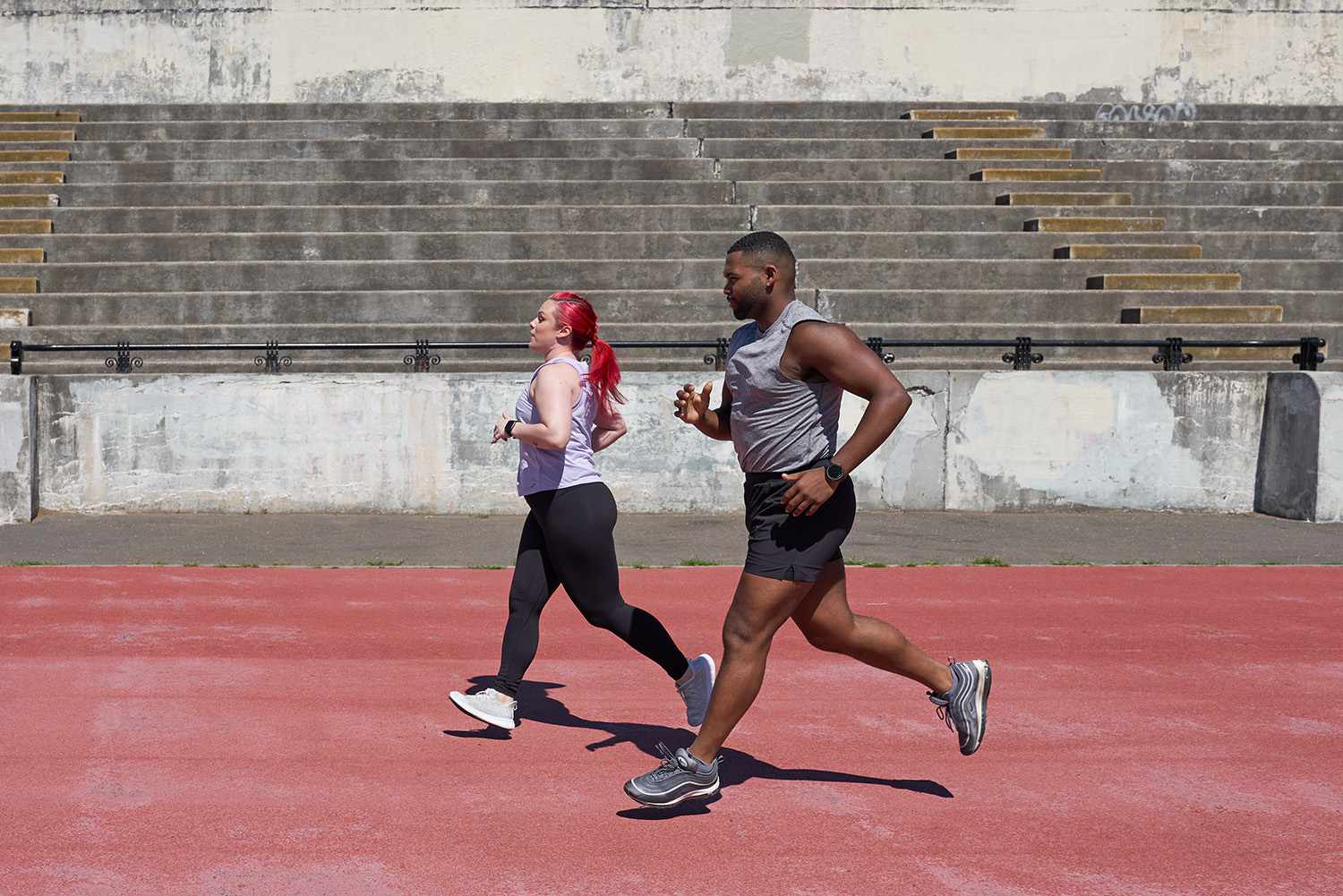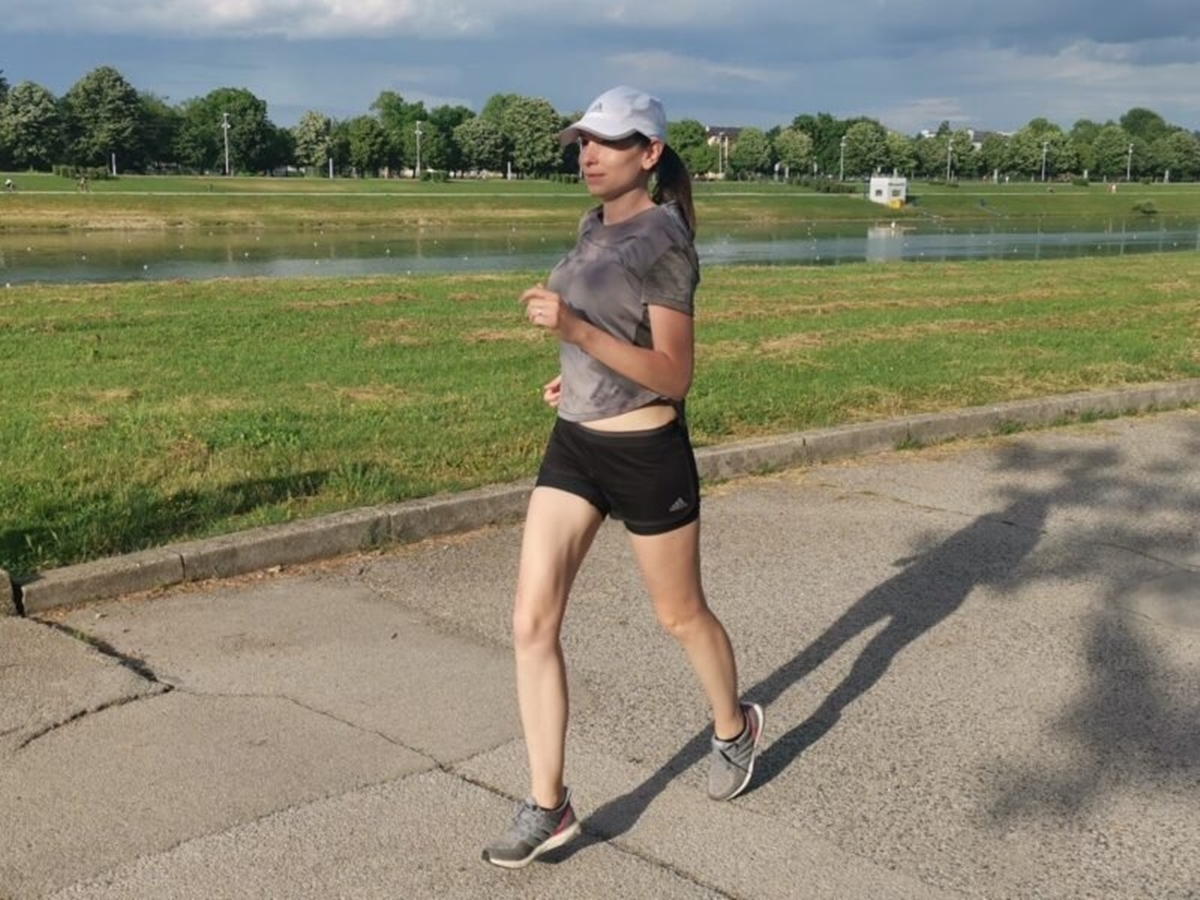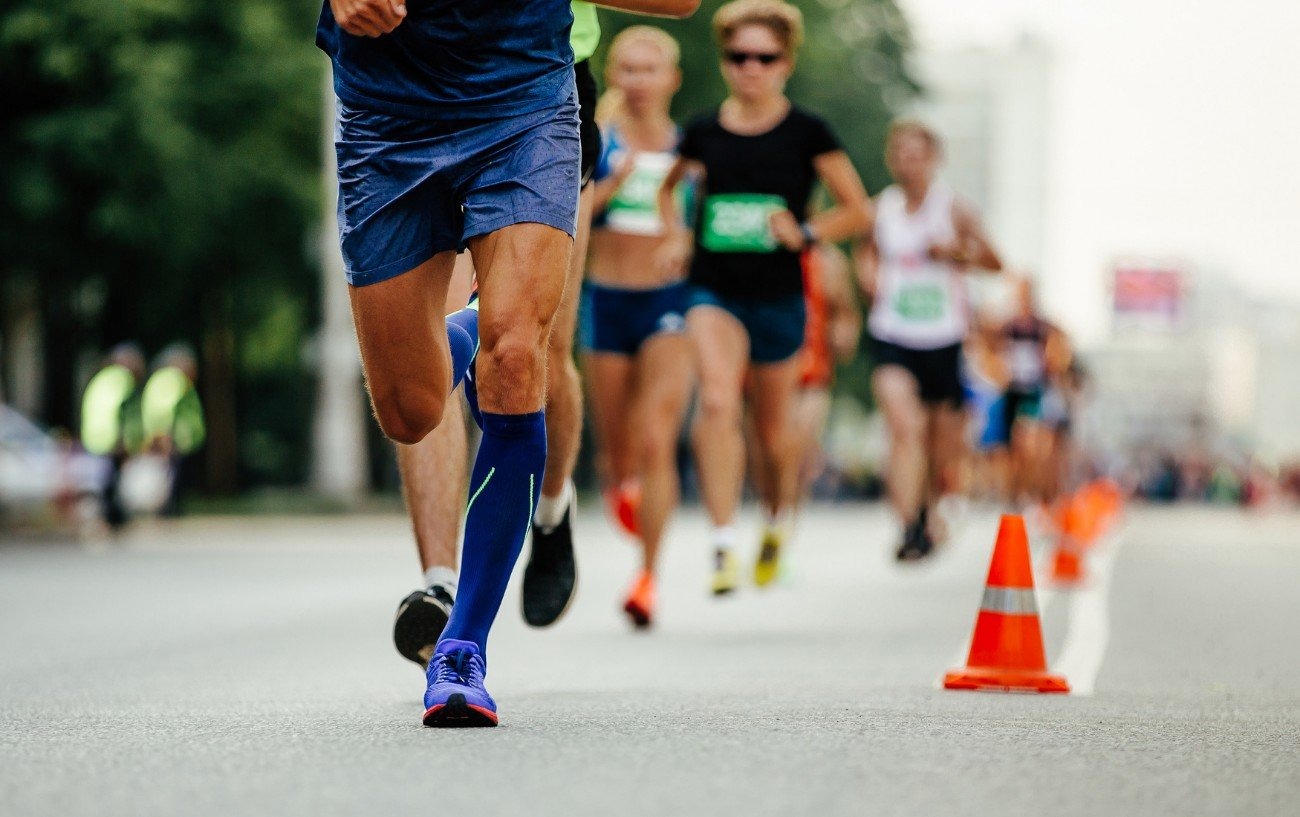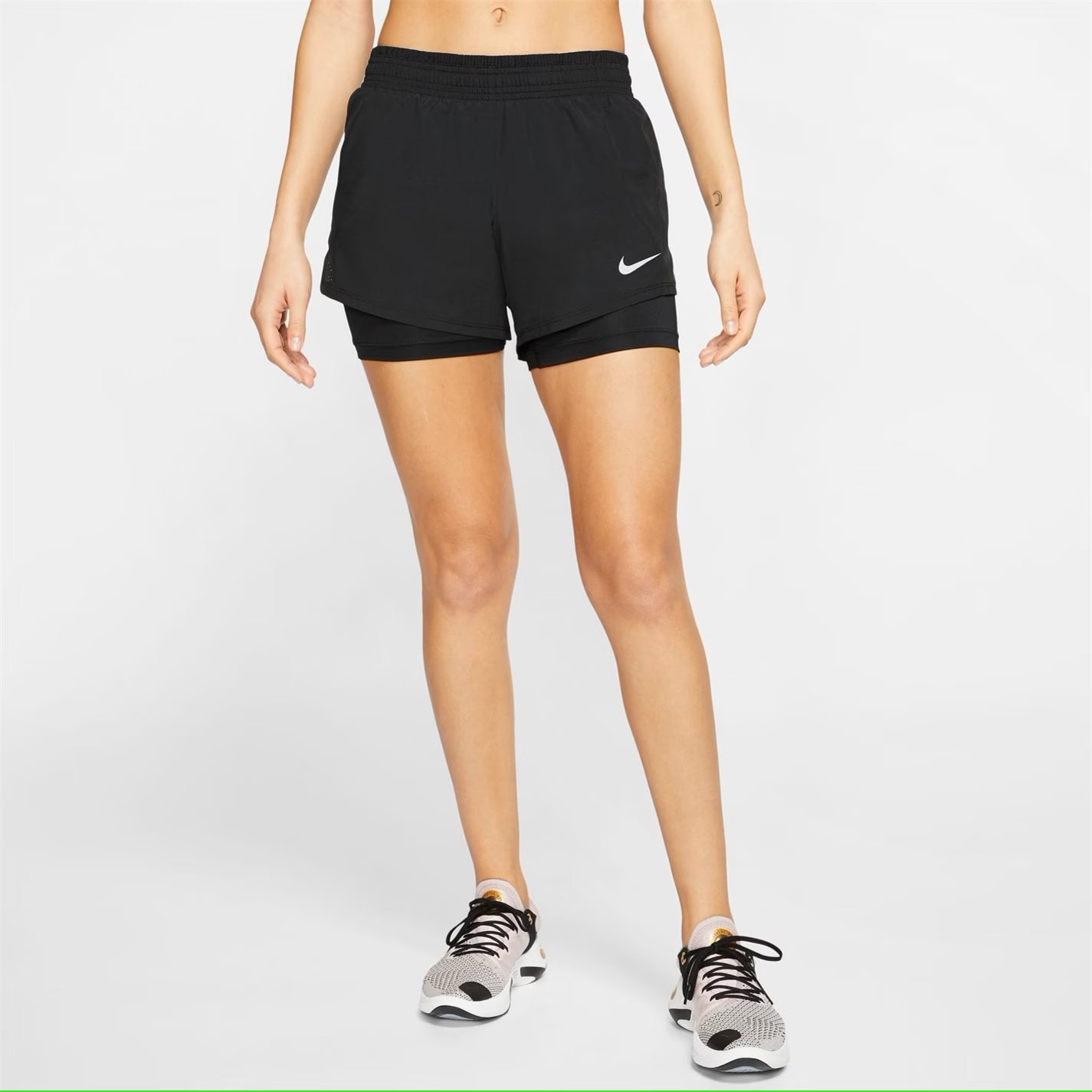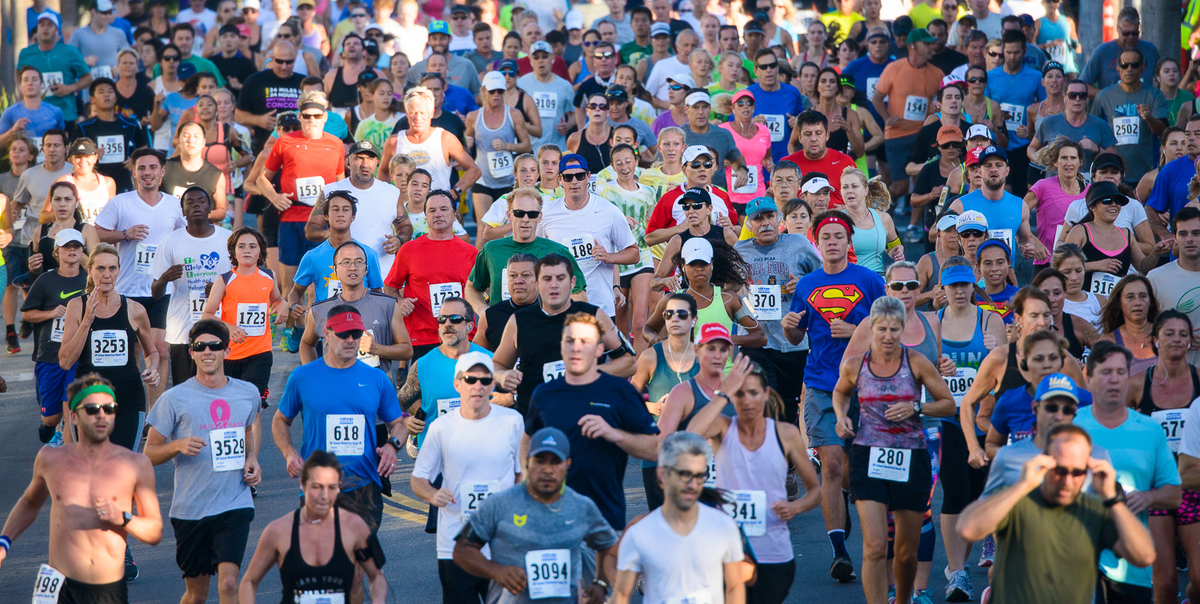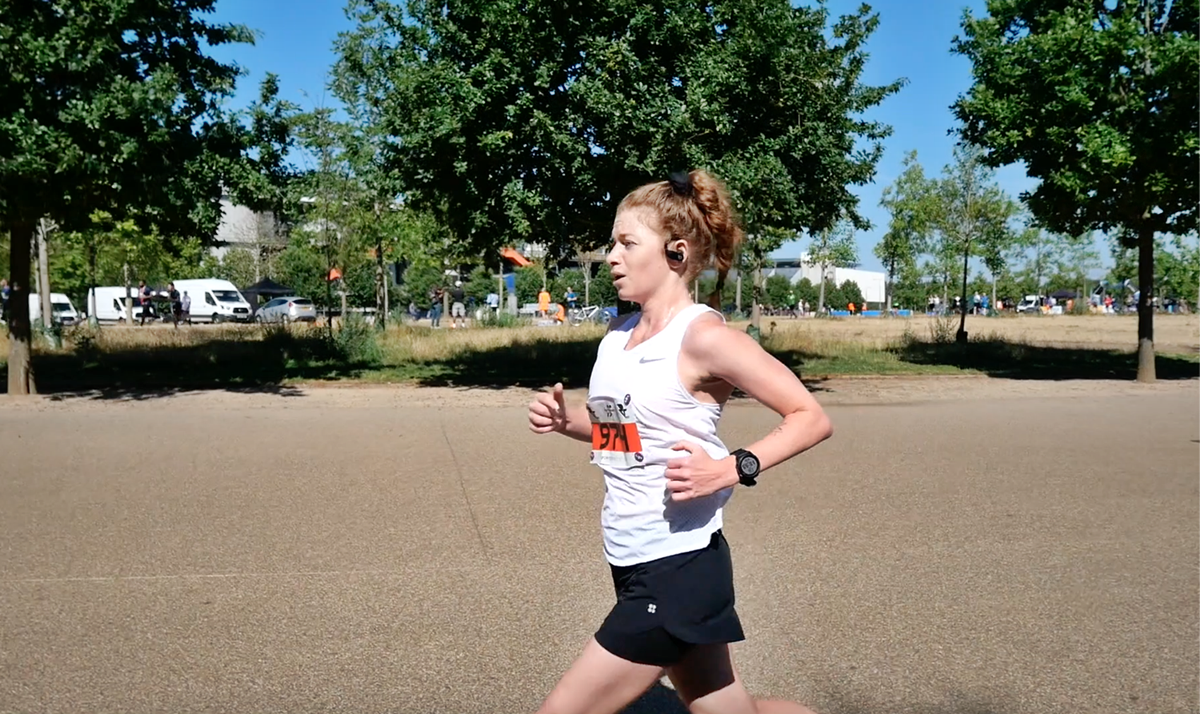

Featured
What To Wear For A 10K Run
Modified: August 21, 2023
Get ready for your 10K run with our featured collection of athletic wear. Find the perfect outfit to run in style and comfort.
Introduction
Welcome to the world of 10K running! Whether you’re a seasoned competitor or a novice looking to take on a new fitness challenge, choosing the right attire for your 10K run is essential for a successful and comfortable experience. The clothing you wear can greatly impact your performance, as well as your overall enjoyment of the event.
In this article, we’ll explore the importance of wearing proper running attire for a 10K race. We’ll cover everything from clothing options for different weather conditions to choosing the right shoes, socks, and accessories. We’ll also discuss the benefits of compression gear, the importance of a good sports bra for women, and the gear necessary for hydration and nutrition. Lastly, we’ll touch on safety measures and visibility for night runs.
By the end of this article, you’ll have a better understanding of what to wear and why it’s important, helping you feel prepared and confident for your upcoming 10K race.
So, let’s dive into the world of running attire and discover how to optimize your performance and comfort on race day!
Importance of Proper Running Attire
When it comes to running a 10K, having the right attire can make all the difference. Proper running attire is not just about looking good, but it plays a crucial role in your performance, comfort, and overall running experience. Here are a few reasons why wearing the right clothing is important for your 10K run:
1. Optimal Performance: The clothes you wear can impact your performance on the race day. Lightweight, breathable fabrics can help regulate your body temperature and keep you cool and dry, allowing you to focus on your run without distractions. Compression gear can also provide support to your muscles, reducing fatigue and improving your overall performance.
2. Comfort: Running for a long distance like a 10K requires comfortable attire. Wearing clothes that are too tight or too loose can lead to chafing, irritation, and discomfort. Look for running-specific clothing that is designed to provide a snug and comfortable fit, allowing you to move freely and without restrictions.
3. Moisture-wicking and Breathability: Sweating is inevitable when running, especially during a 10K race. Wearing moisture-wicking and breathable fabrics can help to wick away sweat from your skin and allow airflow, keeping you dry and comfortable throughout the race. Moisture-wicking fabrics also help to prevent the accumulation of sweat, reducing the risk of skin irritation and chafing.
4. Weather Protection: Weather conditions can vary greatly on race day, so it’s important to be prepared for any weather scenario. Wearing clothing designed for different weather conditions, such as lightweight and breathable fabrics for hot weather or layering options for colder temperatures, can help you stay comfortable and perform at your best.
5. Psychological Boost: Wearing the right attire not only has physical benefits but can also provide a psychological boost. When you feel confident and comfortable in your running gear, it can help you stay motivated, focused, and mentally prepared for the race ahead.
Now that you understand the importance of proper running attire, let’s explore the different clothing options available for various weather conditions.
Clothing for Different Weather Conditions
Running a 10K often means facing various weather conditions, from scorching heat to chilly winds. To ensure you’re comfortable and protected during your run, it’s important to choose the right clothing for the prevailing weather conditions. Let’s take a closer look at what to wear for different weather scenarios:
1. Hot Weather: When running in hot weather, it’s crucial to wear lightweight, breathable, and moisture-wicking clothing. Opt for shorts or lightweight running pants made from sweat-wicking materials like nylon or polyester. Choose a lightweight, moisture-wicking shirt or tank top to keep you cool and dry. Don’t forget to apply sunscreen and wear a hat or visor to protect yourself from the sun’s rays.
2. Cold Weather: In colder temperatures, layering is key to stay warm without overheating. Start with a moisture-wicking base layer that will keep sweat away from your body. Add a long-sleeved running shirt or a thermal top for insulation. For bottoms, wear running tights or pants made from thicker, thermal materials. Don’t forget to wear a lightweight, breathable jacket that provides protection against wind and rain. Gloves, a hat, and a neck gaiter can also help keep extremities warm.
3. Wet Weather: Running in the rain requires waterproof or water-resistant clothing. Look for a lightweight, waterproof jacket or a water-resistant shell that will keep you dry while allowing moisture to escape. Opt for quick-drying materials for your pants or tights. A hat with a brim or a cap can also help keep rain out of your face and eyes. Replace your regular running socks with moisture-wicking and waterproof options to prevent blisters.
4. Variable Weather: If the weather is unpredictable, it’s best to dress in layers. Start with a moisture-wicking base layer, add a long-sleeved shirt, and top it off with a lightweight jacket or vest that you can easily remove or tie around your waist if the temperature rises. This way, you can adjust your clothing as needed throughout the race.
Remember, comfort and functionality should be the main factors when choosing your running attire. Dress according to the weather conditions and always err on the side of slightly underdressing rather than overdressing, as you will warm up during the run. Now that you know how to dress for different weather scenarios, let’s move on to the most critical element of your running attire – the shoes!
Choosing the Right Shoes
When it comes to running a 10K, one of the most important decisions you’ll make is choosing the right pair of running shoes. The right shoes can greatly enhance your performance, reduce the risk of injury, and provide optimal comfort throughout your run. Here are some key factors to consider when selecting your running shoes:
1. Proper Fit: The most crucial aspect of choosing running shoes is ensuring they fit properly. Shoes that are too tight can cause discomfort and blisters, while shoes that are too loose can lead to instability and an increased risk of tripping or rolling your ankle. Look for shoes that provide a snug fit around the heel and midfoot, with enough room in the toe box to wiggle your toes.
2. Support and Cushioning: Running shoes should provide adequate support and cushioning to absorb impact and reduce stress on your joints. Different runners have different needs, so consider your foot type and gait when selecting shoes. Neutral shoes work well for runners with a more neutral foot strike, while stability shoes are designed for overpronators who require additional arch support.
3. Weight: The weight of your running shoes can influence your running efficiency and speed. Lighter shoes are generally preferred for shorter distances like a 10K, as they can help minimize fatigue and increase agility. However, make sure the lighter shoes still provide adequate support and cushioning.
4. Breathability: Look for running shoes made from breathable materials to allow airflow and keep your feet dry and cool. Good ventilation can help prevent blisters, odor, and discomfort caused by heat and sweat buildup.
5. Terrain-Specific Shoes: If you know you’ll be running on specific terrains, such as trails or pavement, consider getting shoes designed for that specific purpose. Trail running shoes have more aggressive treads and provide better traction on uneven surfaces, while road running shoes are designed for smoother surfaces and offer greater responsiveness.
6. Test Run: Before committing to a pair of running shoes, it’s essential to try them on and take them for a test run. Most specialty running stores offer the opportunity to try out shoes on a treadmill or even outdoors. This allows you to assess the comfort, fit, and performance of the shoes before making a final decision.
Investing in a quality pair of running shoes that meet your specific needs can significantly enhance your running experience and reduce the risk of injury. Remember to replace your shoes periodically, as they will wear out over time and lose their original support and cushioning properties. With the right shoes on, let’s move on to another crucial element of your running attire – the socks and accessories.
Socks and Accessories
When it comes to running, socks and accessories may seem like small details, but they can have a big impact on your overall comfort and performance. Let’s explore the importance of choosing the right socks and accessories for your 10K run:
1. Socks: Wearing the right socks is essential to prevent blisters and discomfort during your run. Look for moisture-wicking socks made from synthetic materials like polyester or nylon, or specialized running socks with extra cushioning in the heel and toe areas. Seamless socks can also help prevent friction and irritation. Avoid cotton socks as they tend to retain moisture, leading to blisters and discomfort.
2. Headwear: Protecting your head from the sun, rain, or cold is important during a 10K run. Consider wearing a lightweight hat or visor to shield your face and eyes from the sun’s rays and to keep sweat out of your eyes. In colder weather, opt for a beanie or headband to keep your ears warm.
3. Sunglasses: Protecting your eyes from the sun’s glare is crucial, especially if you’re running during bright daylight. Choose sunglasses that offer UV protection and have a snug fit, preventing them from bouncing or sliding while you run.
4. GPS Watch or Running App: Tracking your pace, distance, and time can help you gauge your performance and monitor your progress. Consider using a GPS running watch or a smartphone running app to track your run and analyze your data.
5. Running Belt or Armband: To carry essentials like keys, phone, or energy gels during your run, consider using a running belt or an armband. These accessories ensure that your belongings stay secure and don’t distract you while you run.
6. Compression Sleeves or Calf Guards: Compression gear, such as calf sleeves or guards, can improve blood circulation, aid in muscle recovery, and reduce fatigue. They are particularly beneficial for longer runs or if you have a history of calf or shin issues.
Remember, while accessories can enhance your running experience, it’s important not to overload yourself. Choose accessories that are necessary and won’t hinder your movement or distract you during the race. Now that we’ve covered socks and accessories, let’s move on to discuss sports bras for women, a crucial consideration for female runners.
Sports Bras for Women
For women participating in a 10K run, finding the right sports bra is essential for comfort, support, and injury prevention. Regular bras are not designed to provide the necessary support during high-impact activities like running. Here’s why choosing the right sports bra is crucial:
1. Support: During a 10K run, breasts can move vertically, horizontally, and in a figure-eight motion. Without proper support, this movement can cause discomfort, pain, and even damage to the delicate breast tissue. Sports bras are designed to minimize breast movement and provide the necessary support to reduce these risks.
2. Comfort: Sports bras are made from breathable and moisture-wicking materials, which help keep you cool and dry during your run. They also feature wider shoulder straps and a supportive band underneath the bust to distribute the weight evenly and avoid discomfort caused by straps digging into the shoulders or a tight band.
3. Impact Control: Sports bras come in different levels of support, ranging from low impact to high impact. The level of impact control you need depends on your breast size and the intensity of your run. High-impact sports bras provide the most support and are recommended for women with larger breasts or for runners engaging in vigorous activities.
4. Fit: Like regular bras, sports bras need to fit properly to provide the right support and comfort. Make sure to measure yourself accurately and refer to the manufacturer’s size chart. Consider trying on different styles and brands to find the one that suits your body shape and running needs best.
5. Replacing Your Sports Bra: Just like running shoes, sports bras need to be replaced regularly. Over time, the elasticity and support of a sports bra can diminish due to frequent use and washing. If you notice any signs of a loose or unsupportive fit, it’s time to invest in a new sports bra.
Taking the time to find the right sports bra is crucial for a comfortable and enjoyable 10K run. Choose a sports bra that provides the necessary support, control, and comfort for your body, allowing you to focus on your run without any discomfort or distractions. With a well-supported chest, next, let’s explore the benefits of compression gear for running.
Benefits of Compression Gear
Compression gear has gained popularity in the running community, with many athletes opting to wear compression tops, shorts, and socks during their training sessions and races. But what exactly is compression gear, and what are the benefits of incorporating it into your 10K run? Let’s explore the advantages of wearing compression gear:
1. Improved Circulation: Compression gear applies pressure to your muscles, helping to enhance blood circulation. This increased circulation can improve oxygen delivery and the removal of waste products, reducing muscle fatigue and speeding up recovery time.
2. Reduced Muscle Vibration: During running, muscles are constantly in motion, leading to micro-vibrations. Compression gear can help reduce these vibrations, minimizing muscle damage and fatigue. This can result in improved running efficiency and performance.
3. Increased Muscle Support: Compression garments provide targeted support to specific muscle groups, such as the calves and thighs. This support can help reduce muscle oscillation and enhance muscle alignment, which may contribute to improved running form and reduced risk of injuries.
4. Enhanced Warm-Up and Recovery: Wearing compression gear before and after your run can aid in both warm-up and recovery. The increased blood flow and muscle support provided by compression garments can help warm up your muscles more efficiently, reducing the risk of injury. Additionally, wearing compression gear during the recovery phase can help reduce swelling and inflammation, promoting faster recovery and reducing muscle soreness.
5. Prevention of Cramps and Fatigue: Some runners report experiencing fewer muscle cramps and less fatigue when wearing compression gear. The compression around the muscles can potentially help minimize cramping and delay the onset of muscle fatigue, allowing you to perform at your best for longer durations.
6. Temperature Regulation: Compression gear is typically made from moisture-wicking materials that help regulate body temperature during your run. This can keep you cool in hot weather and provide insulation in cooler conditions, helping you maintain optimal comfort throughout your 10K run.
While compression gear offers several potential benefits, it’s essential to find the right fit and determine if it works well for your body and running style. Every runner is unique, so it may be worth experimenting with compression gear during your training runs before deciding if it enhances your performance and comfort levels.
With compression gear supporting your muscles, let’s dive into the essential gear needed for staying hydrated and fueled during a 10K run.
Hydration and Nutrition Gear
Proper hydration and nutrition are crucial for a successful 10K run. Having the right gear to support your hydration and fueling needs can make a significant difference in your performance. Let’s explore the essential gear for staying hydrated and fueled during your run:
1. Water Bottle or Hydration Pack: For shorter distances like a 10K, a handheld water bottle or a hydration pack can be sufficient for carrying water. Look for bottles or packs that are lightweight, comfortable to hold or wear, and have a secure closure to prevent leaks. This ensures you have access to hydration throughout the race.
2. Hydration Belt: A hydration belt is an alternative option for carrying water during your run. It typically features multiple compartments to hold water bottles, energy gels, and small essentials like your phone or keys.
3. Energy Gels or Chews: During a 10K run, you may need additional fuel to maintain your energy levels. Energy gels or chews are portable and convenient sources of carbohydrates that can provide a quick boost of energy. Experiment with different brands and flavors during your training runs to find what works best for you.
4. Electrolyte Replacement: When running for an extended period or in hot weather, it’s essential to replace electrolytes lost through sweat. Electrolyte drinks, tablets, or powders can help replenish the minerals (such as sodium, potassium, and magnesium) essential for proper hydration and muscle function.
5. Running Fuel Belt: A running fuel belt is a versatile solution that allows you to carry both water and fuel. It features multiple pockets for storing energy gels, snacks, and small essentials. Look for a belt that is adjustable, comfortable, and does not bounce or ride up during your run.
Remember to test your hydration and fueling gear during your training runs to make sure they are comfortable and meet your needs. Additionally, be mindful of maintaining an appropriate balance between hydration and fuel intake to prevent any digestive discomfort during your race.
With your hydration and nutrition needs covered, let’s delve into an increasingly important aspect of running safety – ensuring visibility when running at night.
Safety and Visibility at Night
Running at night can be a peaceful and invigorating experience, but it also presents unique challenges in terms of safety and visibility. Taking precautions to remain visible to motorists and other pedestrians is crucial for a safe and enjoyable night run. Here are some tips for enhancing your safety and visibility:
1. Wear Reflective Clothing: Invest in running gear that incorporates reflective details or fabrics. These reflective elements will bounce back light from car headlights, increasing your visibility to drivers. Reflective vests, jackets, or armbands are excellent options for improving your visibility during nighttime runs.
2. Use LED Lights: Light up your path and make yourself more visible by using LED lights. Attach a small LED light to your clothing, shoes, or hat to ensure you’re easily spotted by others. Additionally, carrying a small handheld flashlight can help you navigate any uneven surfaces or dark areas.
3. Run Against Traffic: When running on roads or streets without dedicated paths, always run facing oncoming traffic. This allows you to see approaching vehicles and enables drivers to notice you more easily. Stay as far to the side of the road as possible to create a safe space between you and passing vehicles.
4. Stay Alert and Aware: When running at night, be extra cautious and aware of your surroundings. Stay focused, avoid distractions like loud music, and be mindful of potential hazards such as uneven pavement or sidewalk obstacles. Always be prepared to react to unexpected circumstances.
5. Share Your Route and Carry Identification: Let someone know your planned route and estimated return time when running alone. If possible, carry identification with emergency contact information. In case of any unforeseen circumstances, this can help first responders or passersby quickly reach out to your contacts.
6. Consider Group Running: Running with a group or a running club can increase safety and visibility, as well as provide the motivation and support of fellow runners. If running alone at night makes you uncomfortable, look for local running groups that organize nighttime group runs in well-lit areas.
Remember, safety should always be your top priority when running at night. By taking these precautions and making yourself as visible as possible, you can enjoy the benefits of running at night while minimizing any potential risks.
Now that you are equipped with the knowledge to stay safe during your night runs, let’s conclude this article with a recap of the key points discussed.
Conclusion
Preparing for a 10K run involves more than just training your body and building endurance. It also requires selecting the proper attire and gear to ensure a comfortable and successful race. From choosing the right clothing for different weather conditions to finding the perfect pair of running shoes, every aspect of your running attire plays a significant role in your performance and enjoyment.
Consider the weather conditions you’ll be running in and dress accordingly, wearing lightweight and breathable fabrics to stay cool in hot weather and layering up for colder temperatures. Don’t forget about the importance of selecting the right shoes – ones that fit well, provide support, and suit your running style.
Other essential considerations include wearing the appropriate socks, selecting the right sports bra for women, and considering the benefits of compression gear for improved performance and muscle support. Pay attention to hydration and nutrition, choosing gear that allows you to stay properly fueled and hydrated throughout the race.
Lastly, prioritize safety and visibility, especially when running at night. Wear reflective clothing, use LED lights, and be aware of your surroundings. Running against traffic and sharing your route with someone can also help ensure your safety during your runs.
Remember, finding the right attire and gear is a personal process. What works for one runner may not work for another. It’s important to experiment during your training runs to find the combination of gear that maximizes your comfort, performance, and enjoyment.
So, lace up your shoes, dress for success, and hit the pavement with confidence. With the right attire and gear, you’re now ready to conquer your 10K race!
